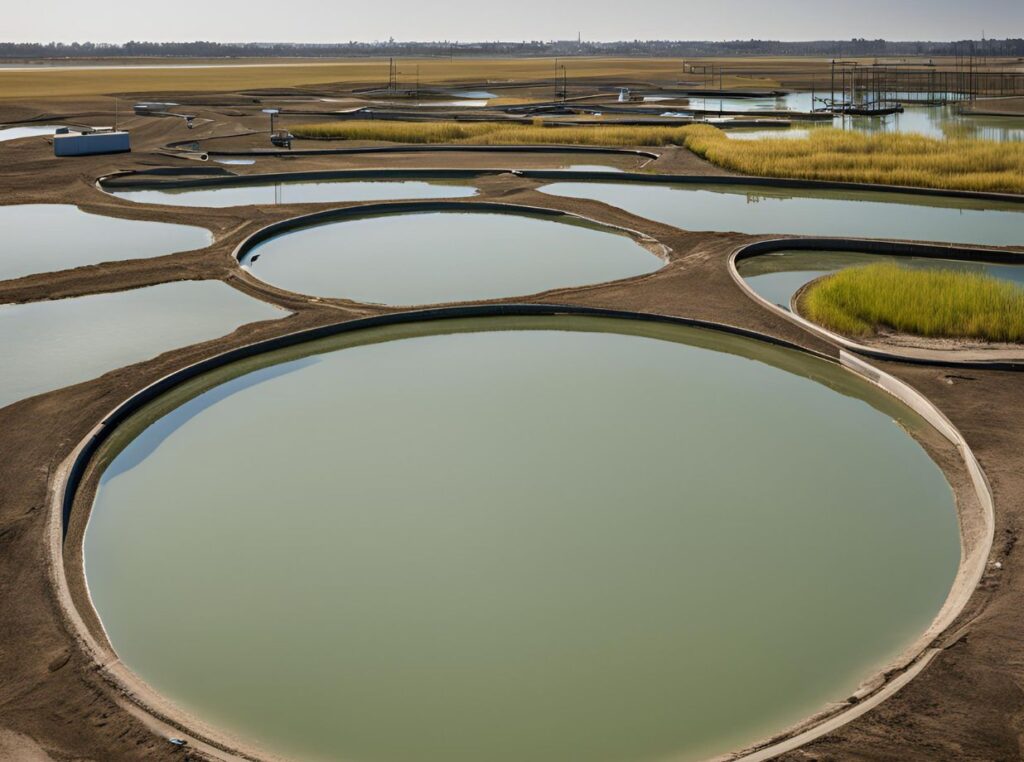Have you ever wondered about the differences between anaerobic and aerated lagoons in wastewater treatment? These large ponds might not be something you think about every day, but they play a crucial role in managing waste and protecting the environment. By breaking down complex materials, these water-treatment systems help ensure that wastewater is treated in an efficient and eco-friendly manner.
In this article, you will find an informative comparison of anaerobic and aerated lagoons that will cover various aspects, including their design, operational mechanisms, advantages, disadvantages, and more. Hopefully, by the end of this read, you’ll have a better understanding of how these systems differ, and which might be more appropriate for particular situations. Let’s start by understanding what each type of lagoon is and how they function.

Understanding Anaerobic Lagoons
Anaerobic lagoons are a type of treatment pond used for the stabilization of organic matter in wastewater. They function in low or no oxygen environments, where anaerobic bacteria break down organic material. But let’s dig deeper into how they are structured and how they work.
What are Anaerobic Lagoons?
Anaerobic lagoons are large, lined basins designed to treat wastewater through anaerobic digestion. In these ponds, the lack of oxygen allows for the proliferation of anaerobic bacteria, which break down and stabilize organic matter into simpler compounds such as methane and carbon dioxide. These lagoons are typically covered to contain odors and capture gases.
How Do Anaerobic Lagoons Work?
The process within an anaerobic lagoon involves a series of stages:
- Inflow: Wastewater is directed into the lagoon, where larger solids settle to the bottom.
- Digestion: Anaerobic microorganisms break down the organic material into simpler substances.
- Outflow: Treated water moves to the next stage of treatment or is stored for further use.
Anaerobic lagoons are efficient in breaking down high concentrations of organic matter, making them suitable for farm waste, food industry byproducts, and other high-organic-load waste streams.
Advantages of Anaerobic Lagoons
Anaerobic lagoons have several benefits that make them attractive in certain applications:
- Cost-Effective: The construction and operational costs are relatively low compared to other treatment methods.
- Energy Production: Methane, a byproduct of anaerobic digestion, can be captured and used as a renewable energy source.
- Simple Design: They require minimal mechanical equipment and can be managed with basic training.
Disadvantages of Anaerobic Lagoons
Despite their benefits, there are challenges associated with anaerobic lagoons:
- Odor Issues: Off-gassing can create significant odors if not properly managed with covers and gas capturing systems.
- Sludge Build-Up: Over time, sludge accumulation can require removal and additional handling.
- Temperature Sensitivity: They are less effective in cold climates due to reduced bacterial activity.
Exploring Aerated Lagoons
Aerated lagoons take a different approach by injecting oxygen into the water, promoting the growth of aerobic bacteria that thrive in oxygen-rich environments. This distinction leads to a different treatment process and different outcomes.
What are Aerated Lagoons?
Aerated lagoons are similar to anaerobic ones in size and shape but differ significantly in function. They use mechanical aerators to introduce oxygen into the wastewater, facilitating the growth of aerobic microorganisms. These bacteria metabolize organic matter, leading to reduced odors and more complete breakdown of waste compared to anaerobic methods.
How Do Aerated Lagoons Work?
The treatment process in aerated lagoons is defined by the following steps:
- Aeration: Mechanical aerators continuously inject air, ensuring oxygen is evenly distributed.
- Microbial Activity: Aerobic microorganisms break down organic pollutants more thoroughly.
- Settlement: The breakdown products settle as sludge which is easier to handle than in anaerobic systems.
Advantages of Aerated Lagoons
Aerated lagoons offer their own set of advantages:
- Rapid Treatment: The oxygenation speeds up the treatment process compared to anaerobic options.
- Reduced Odor: Aerobic conditions significantly decrease odor issues.
- Flexibility: These lagoons can handle a wider range of environmental conditions and waste loadings.
Disadvantages of Aerated Lagoons
However, there are also downsides to consider:
- Higher Costs: Initial setup and ongoing energy costs for mechanical aeration systems can be substantial.
- Maintenance: Equipment such as aerators requires regular maintenance and possibly replacement, increasing operational complexity.
- Energy Demand: The systems are energy-intensive due to the continuous need for aeration.
Differences Between Anaerobic and Aerated Lagoons
To better compare anaerobic and aerated lagoons, let’s look at some key differences side by side. Here is a straightforward table to help visualize these variations:
| Aspect | Anaerobic Lagoons | Aerated Lagoons |
|---|---|---|
| Oxygen Requirement | No oxygen (anaerobic conditions) | Requires mechanical aeration (aerobic) |
| Odor Control | Potential odor issues | Minimal odors due to aerobic conditions |
| Energy Usage | Low energy requirement | High energy requirement for aeration |
| Cost | Lower costs (construction and operation) | Higher costs due to equipment and energy |
| Treatment Speed | Slower due to anaerobic digestion | Faster treatment due to aerobic digestion |
| Climate Sensitivity | Less effective in colder climates | More adaptable to temperature variations |
| Byproducts | Methane and stabilized sludge | Well-digested sludge, less methane |
Factors to Consider in Choosing Between the Two
Choosing the right lagoon system depends on several factors including environmental, economic, and operational needs.
Environmental Conditions
Climate plays a significant role in the efficiency of lagoon systems. Anaerobic lagoons may struggle in colder temperatures where bacterial activity slows. Meanwhile, aerated lagoons, though more energy-intensive, provide more consistency in diverse weather conditions.
Cost Considerations
The budget for construction and operation is a critical factor. If initial setup and ongoing energy expenses are a concern, anaerobic lagoons might be the more feasible option. However, if the budget allows for it, and if a faster treatment process is desired, aerated lagoons could be the preferred choice.
Waste Type and Volume
The type and volume of waste being treated are crucial in determining the suitable lagoon:
- Anaerobic Lagoons: Best suited for high-organic-load wastes like agricultural and industrial effluents.
- Aerated Lagoons: Suitable for a broader range of wastewaters, including municipal sewage, due to their faster processing ability.
Space Availability
Space can also dictate the choice between these systems. Anaerobic lagoons often require extensive land areas but less structural complexity. Conversely, aerated lagoons can sometimes fit into smaller spaces due to their efficiency in faster waste stabilization.

Conclusion
Understanding the intricacies between anaerobic and aerated lagoons enhances decision-making processes whether for municipal planning or agricultural applications. While anaerobic lagoons offer a cost-effective and energy-efficient option, they also come with challenges regarding odor and slower treatment times. On the other hand, aerated lagoons, while demanding more energy and maintenance, provide quicker processing and reduced odor issues.
Both systems have their place in wastewater management, and the decision often boils down to the specific needs and constraints of the situation. By considering factors such as environmental conditions, cost, and type of waste, you can make an informed choice that benefits both the environment and the community.
